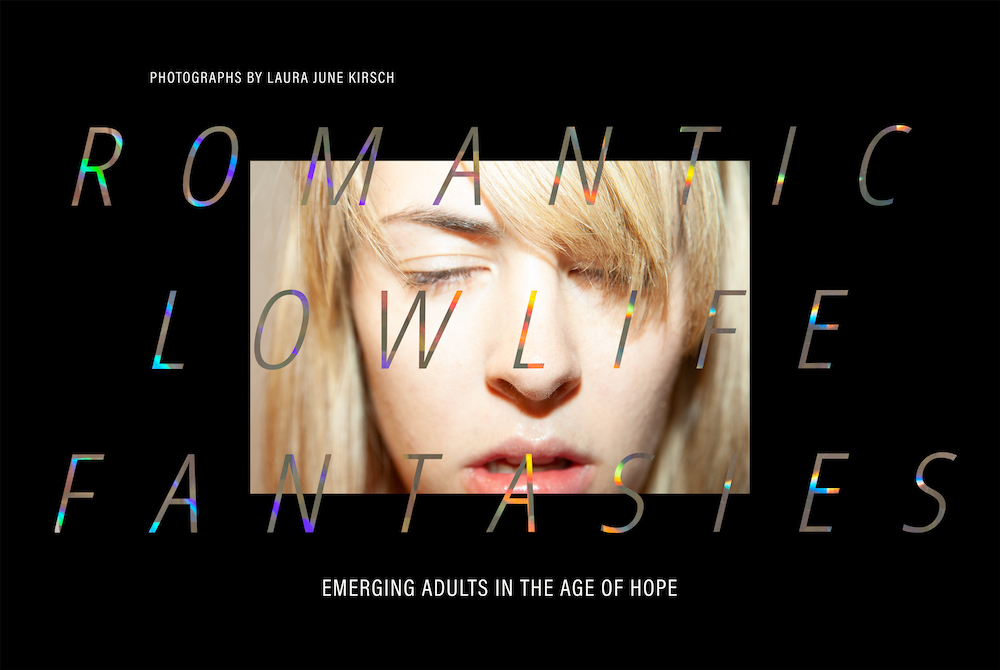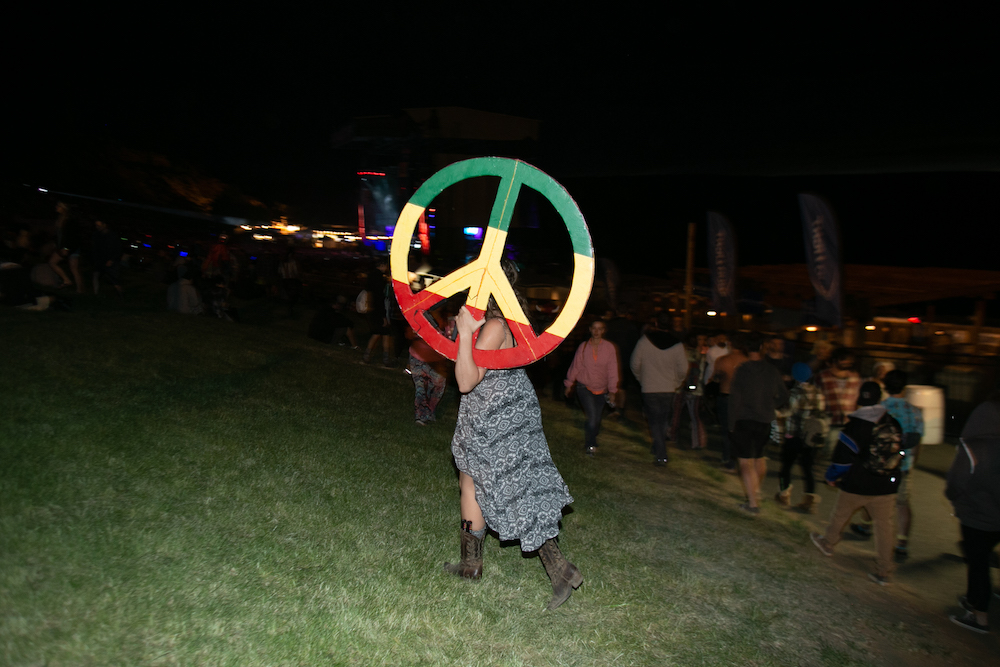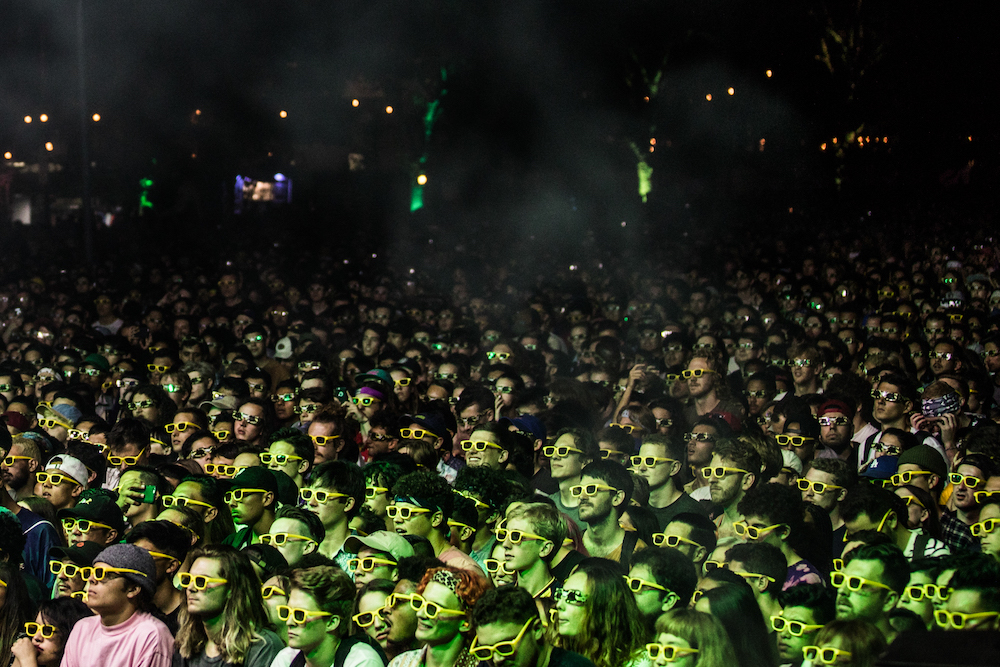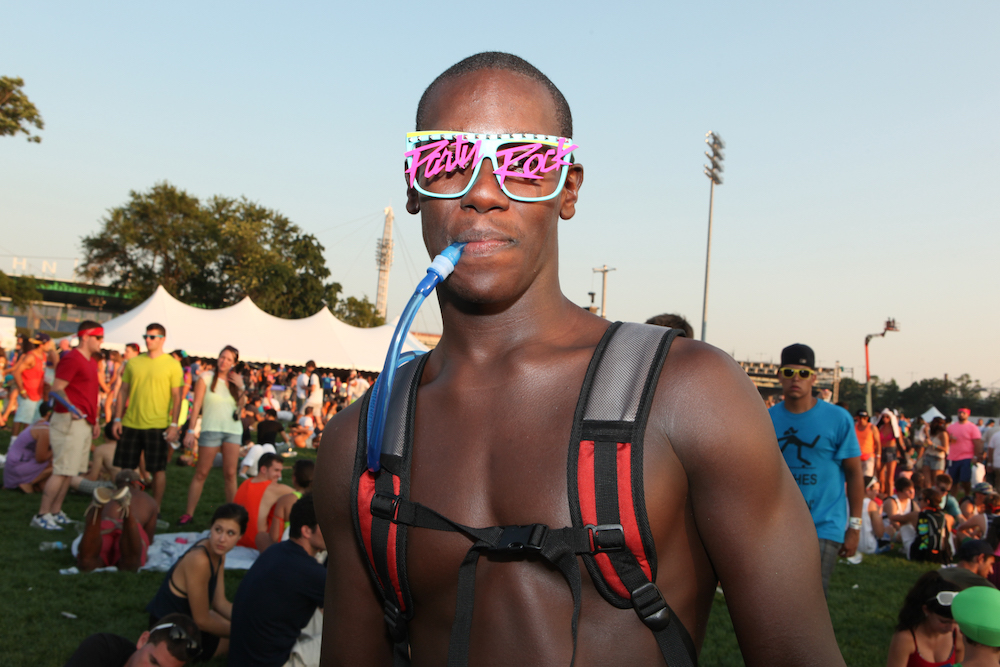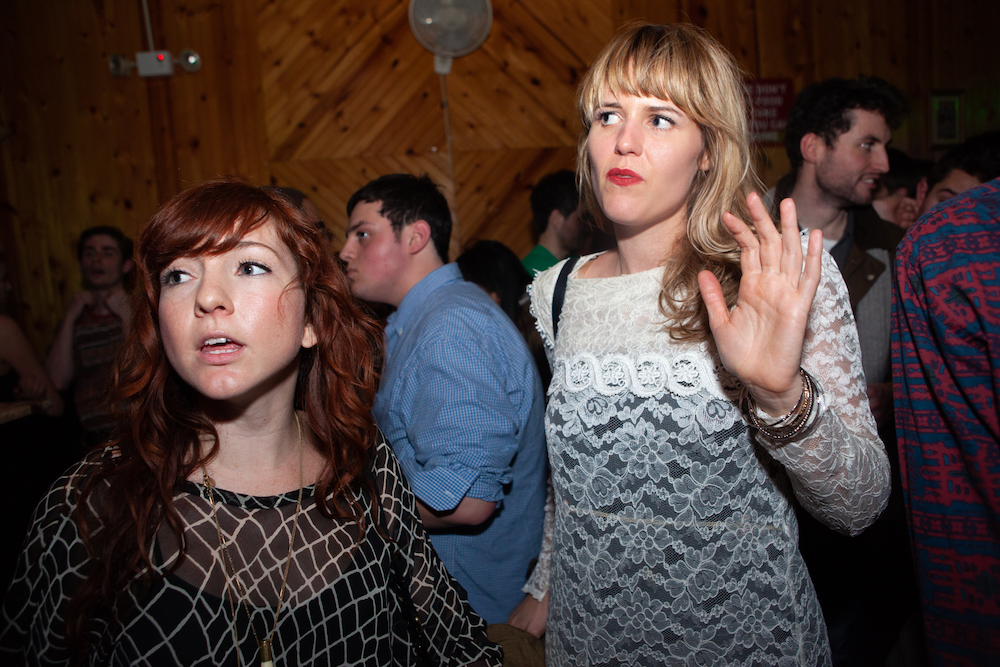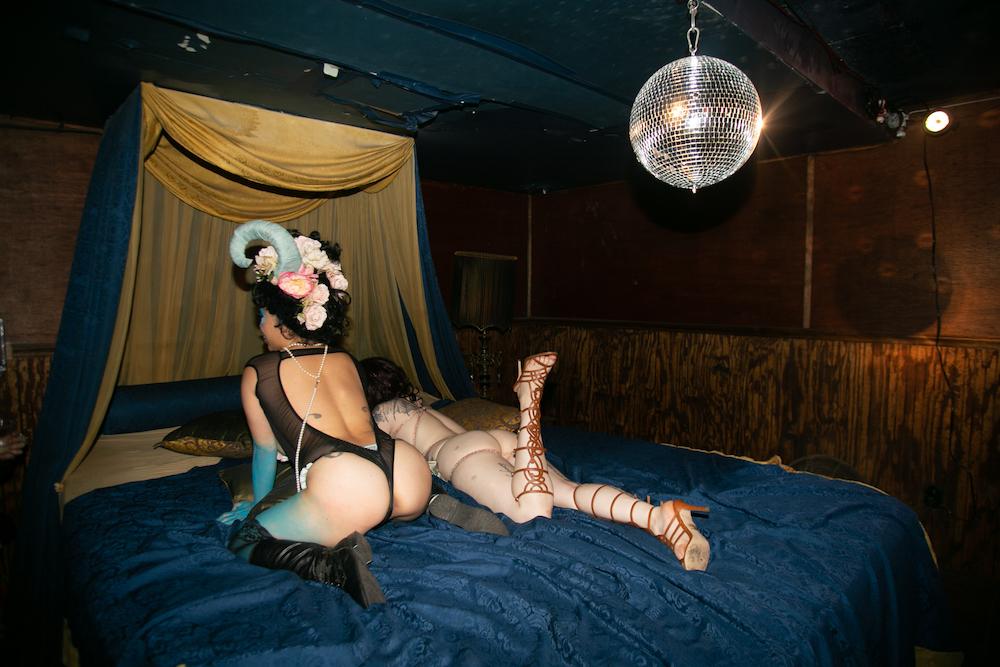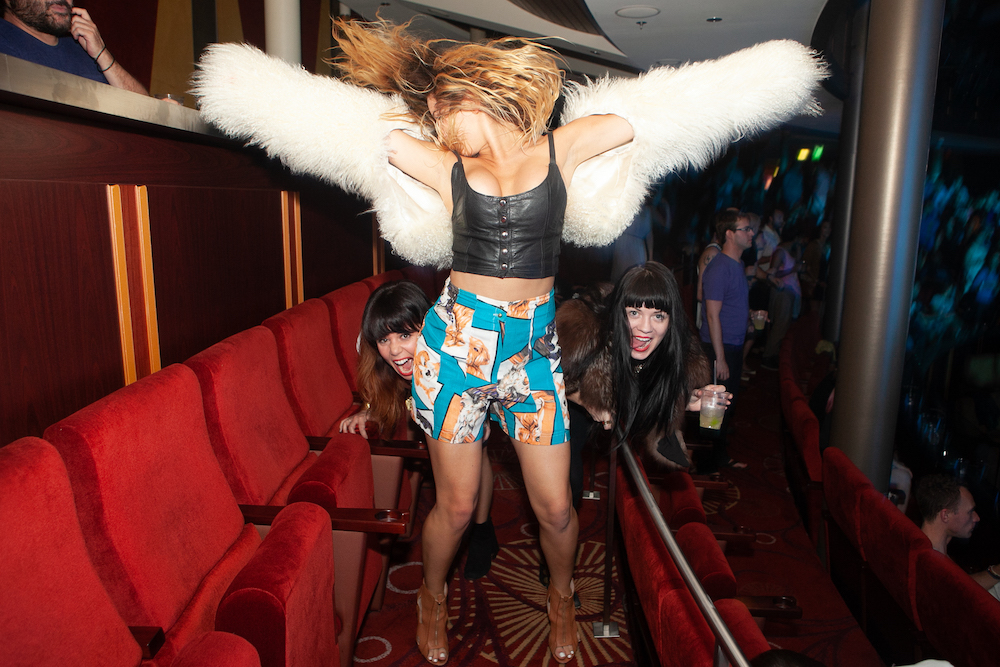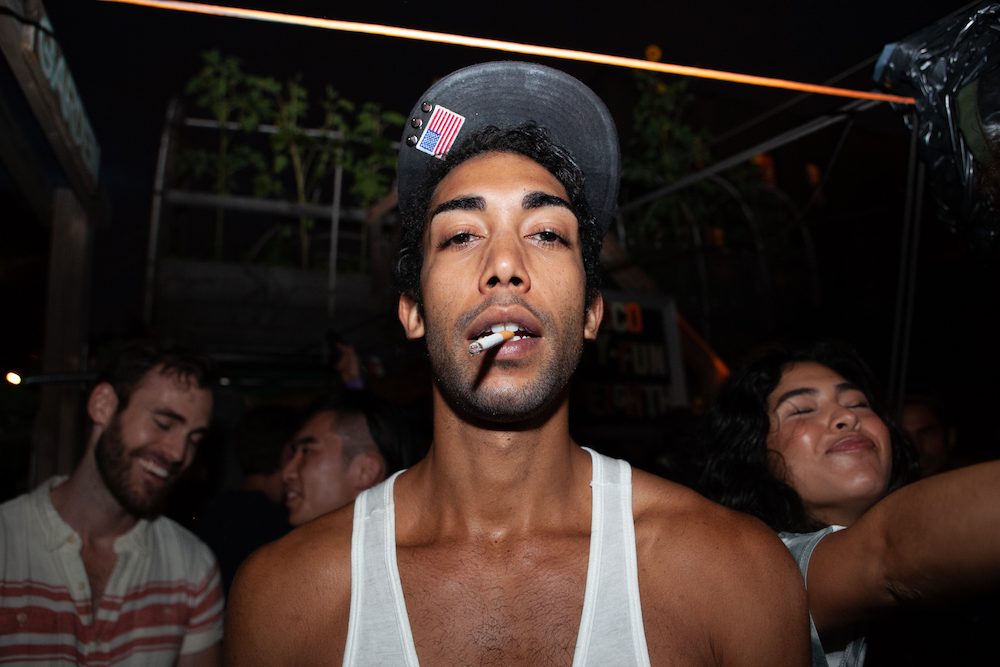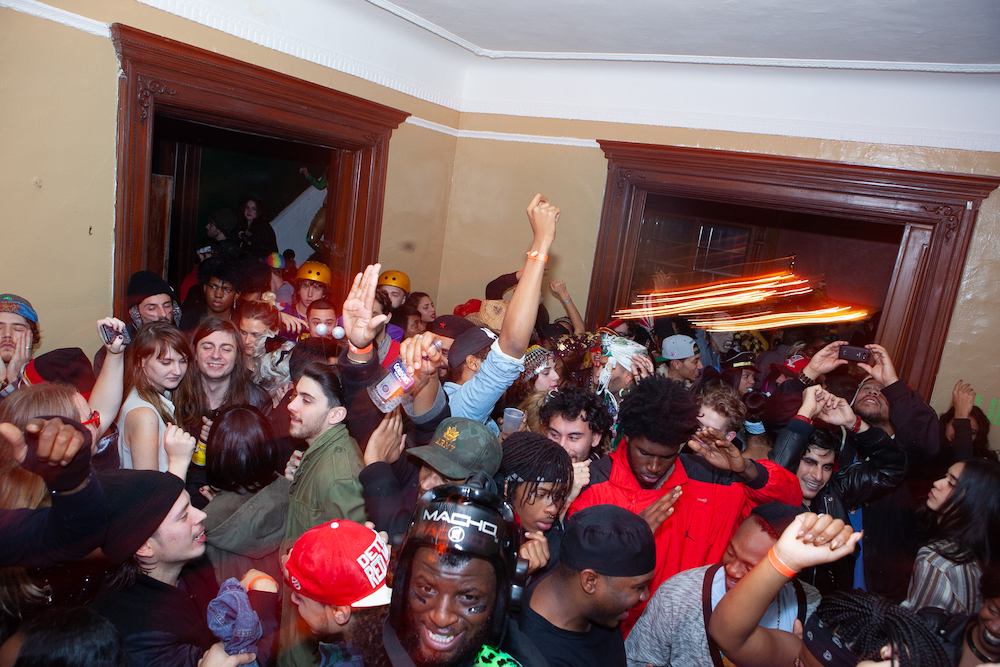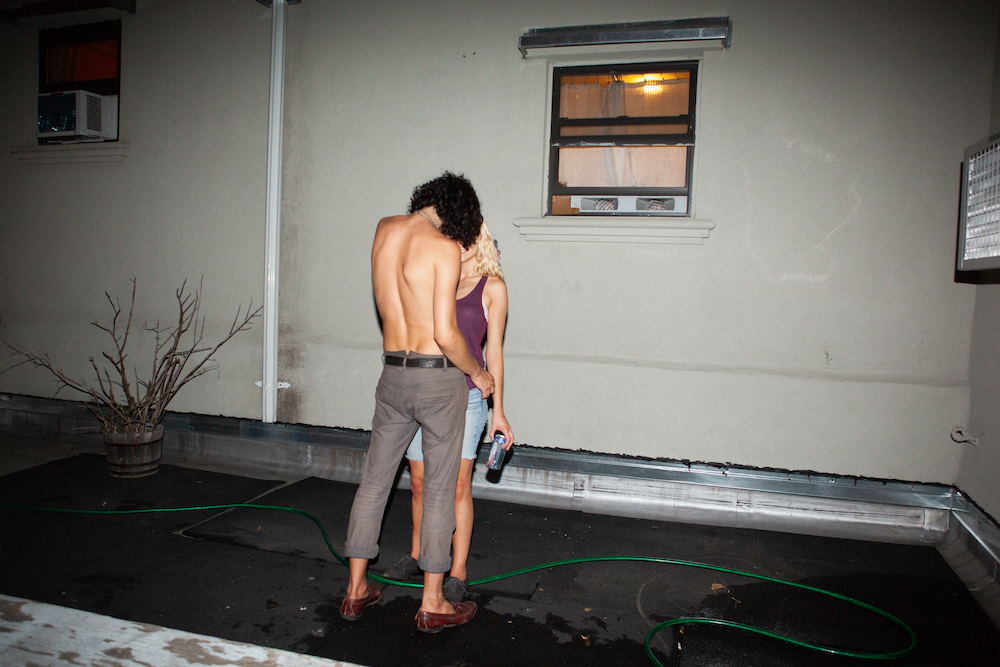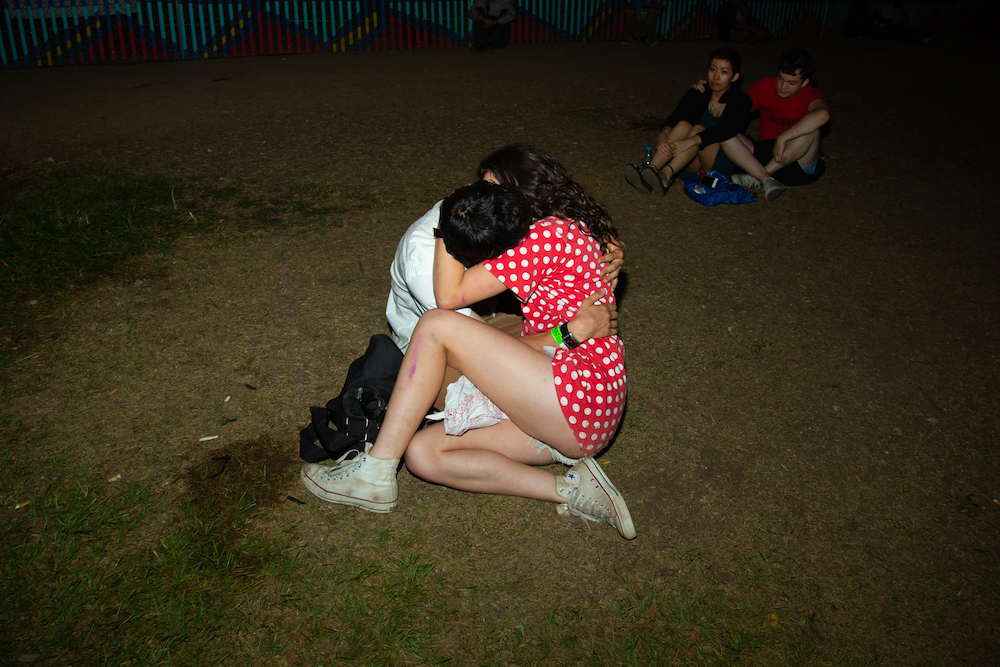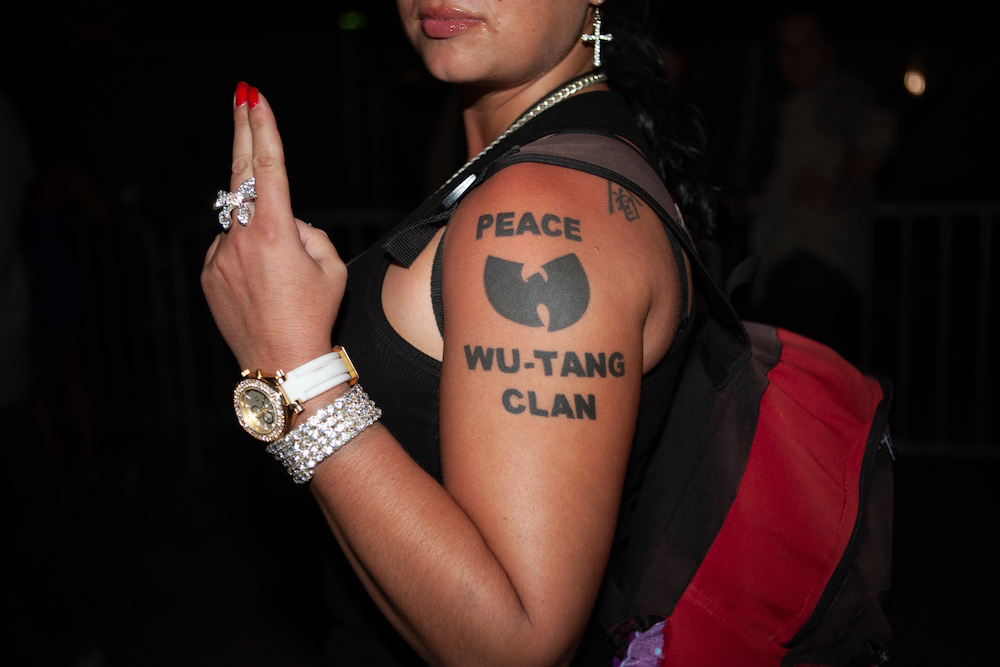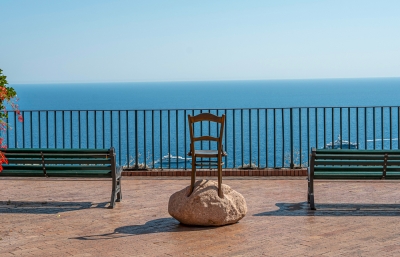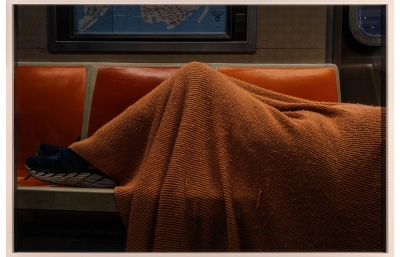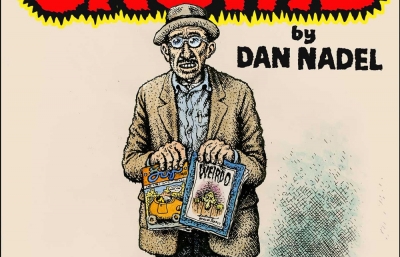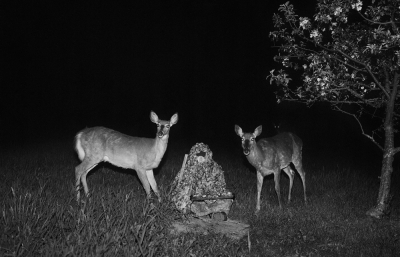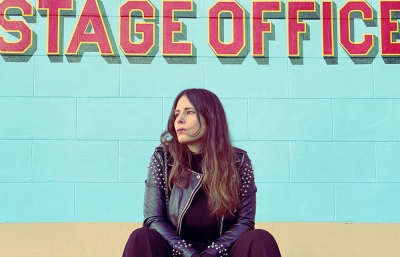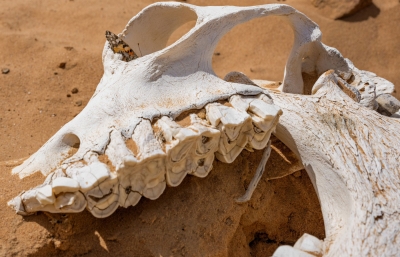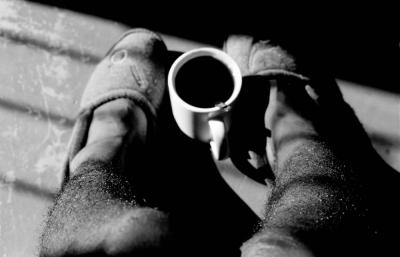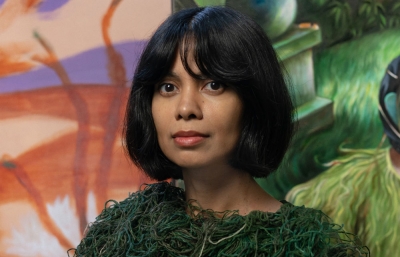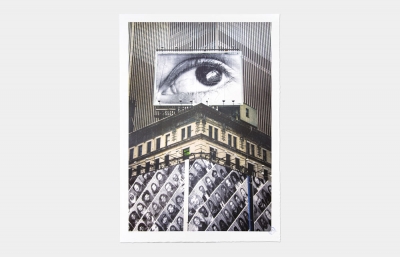Last year we announced the release of Romantic Lowlife Fantasies, a collection of photos of Juxtapoz contributor and Brooklyn-based Laura June Kirsch. This month, Kirsch will be celebrating the release with a Book Signing and Artist Talk on August 17, 2022 at 59 Orchard Street in Manhattan. You can buy the book directly at www.RomanticLowlifeFantasies.com now.
Below is our conversation with Kirsch when you announced the book last year.
It’s funny to think that the first time Laura June Kirsch began showing me the work that would become Romantic Lowlife Fantasies was in a bar, in Brooklyn, in what feels like a monumentally different era while she was talking about, even then, a monumentally different era. For Laura, the years that comprise this book are compartimalized as something like a dream, yet grounded in reality and define a particular lifestyle that feels more defining of the 21st century than any millennial-moving-to-the-city tale could ever muster. This is escapism and yet a real life exposé of the years where we thought some sort of liberal revolution of identity was on the cusp, where a 25 year-old could remain 25 forever, where Tuesday was Friday and Sunday was Wednesday. It didn’t matter. These photos capture an intimacy and primal urge to be in a constant state of celebration and indulgence because there was little to no opposition to either. Music festivals, clubs, parties, pools, booze…. freedom. Romantic Lowlife Fantasies isn’t Laura just showing off “another” youthful moment in time; there is a deeper understanding here of the fact that for perhaps the first time in American history, youth wasn’t interrupted by some drastic evolution to adulthood. Laura talks about how these photos were taken in the Age of Hope, the Obama years, the post-Bush/pre-TikTok world where we finally felt like this generation had fully taken control of their destiny. That it didn’t last is part of the story.
I worked with Laura on this book via Zoom and it seems almost like it had to be that way. Maybe there was a need to rekindle a sense of nostalgia, but I think in a moment of pause and absence of sociability, Laura could begin to articulate what this era was. She was there. She participated. There is no judgement in these photos because it was a time when there wasn’t much care about expectations and societal norms. That is why I love these photos, love her stories about each moment, like how she accidentally appears and disappears in each of them. I only dipped my toe in those scenes, but I understood a sense of momentum in the Age of Hope for our generation. This book is perhaps a chapter closing. There may be a new Roaring 20’s on the horizon but that is what makes this era so bizarrely and disastrously wonderful. It wasn’t born off of a period of time when we couldn’t interact, had our live music and bars and nightlife taken from us. Romantic Lowlife Fantasies was literally a moment when we all decided collectively that life didn’t need a schedule. These photos are fun, a word we don’t use often enough in our vernacular, and Laura captures what it was like to just have that fantastical sense of community and fucking fun.

Evan Pricco: Who are the subjects in this book? You've had some perfect descriptors in the past but who are they? And I guess, while we are here, what was this particular era all about?
Laura June Kirsch: The subjects from this book are millennials in major cities during the Obama era. You could go to a party during this time in these communities and run into your local bartender, a lawyer, maybe a chill actor, musicians, bankers, agents, event planners - whoever. All kinds of curious people from different backgrounds brought together by the love of music, art and a good time.
So much of this work was shot around the live music space, be it shows, festivals, big events or house parties. You and I had a conversation about art and its impact on the masses. I still think it’s hard to find an art form that can bring people together like music. People often knock big production concerts. For me, when you go to a large scale event and thousands of people are collectively connected and losing their mind over a song at the same time, it’s incredible. There is nothing quite like that energy. It’s really humanizing and beautiful. Of course you get that at more intimate performances but the ability to unify large scale audiences is amazing. I loved to capture the candid moments of people experiencing that energy, in all settings.
For me personally, this era was about a true rejection of convention and living in the moment. Not having a plan outside of the next week or month. I remember a friend once was grilling me about my five year plan and I told him I don’t make one because whenever I do it doesn’t work out. I am generally thinking about the next six months and that’s it (his five year plan did not work at all, BTW).
My plan post-college was totally to stick to the script, get a full time job and focus on a relationship. None of that worked for me, I didn’t get one full time job I applied for! So much of this book is showing what happens when you let go of trying to control life and just go where the current takes you.
I do think there was a looseness in the air during the Obama days in particular, with my generation it felt like things were shifting for the best, finally. Barack being elected was so huge, it felt like a nice end to the bush years and things really felt optimistic!
One important part about this era, especially for photographs, is that it was the last period before people were plugged into their phones ALL the time. You know during most of this time you would go out and be...out. Now everybody is physically present but their mind and attention is usually 50% divided to the phone (if not more). It’s not as fun and definitely prevents people from living in the moment as much and connecting with each other. A great example of this is when Coachella did the SS Coachella Cruise. It was fun for many reasons, mainly that it was crazy expensive to get wifi on board so nobody really did it / everybody was off their cell. The energy, connection and bonding experiences that happen when phones are out of the picture is amazing. These photos are kind of the last licks of that!

I sometimes think this, but I'm so far removed from this hedonistic lifestyle in many ways, but is this time "misunderstood" at all. Or is it completely understood and that is what made it so compelling to document.
The joy of music and imbibing transcends to almost every social gathering in the world throughout history. Hedonistic always sounds like such an intimidating negative word when I first see it but it’s definition is simply the pursuit of pleasure. My publicist described the book as a snapshot of hedonism and at first I paused and wondered if that is offensive or bad? It’s incredibly important to me to honor the subjects in this book and how they are represented, there is so much love for them on my end.
When I think of it that way, hedonism being the pursuit of pleasure, is that so wrong to want to have a good time? Have fun? I was terrified of becoming an adult when I was little because it seemed like no fun at all!
I think millennials are completely misunderstood. We are the most criticized generation but have also changed the game in so many ways for the better. What is so wrong about not biting off more than you can chew in your 20’s and enjoying your life? You are still so young at that age. You can’t get back time, you have the rest of your life to settle down.
When I was a little kid I watched MTV, a lot. Like from the womb. When you’re little you see all these people going to spring break and on the grind and all these other fun things. Hedonism was literally packaged to us. But how to access it was another question.
We were the first generation to have the internet in elementary school. If you think about the content we were brought up with, especially if you were an MTV kid like myself, people going out and partying and seeing music was normal content to document, it was what we were exposed to daily.

I hate doing this to people, but it helps gauge some insight. Talk about a typical night out for you, camera in hand, and who you were shooting for, what you were shooting for, what some of the events, clubs and parties were for?
Great question. The thing about this time is there literally was no such thing as a “typical night”, shooting or not. You could be at a high end food event in the city one night and then a basement in Bushwick seeing like Nico Jaar the next. Or like a smartwater branded party in midtown with your favorite rapper performing and then at BAM the next night for Magnetic Fields. Or, one night, the Carmelo Anthony All-Star party followed by the SNL 40th anniversary party. If this time in my life was the NYMag approval matrix, the whole thing would be lit up in terms of the broad range of events or parties I would attend for work or fun. There was no normal, there was no standard, there was complete “down for whatever, along for the ride” vibes by my whole group of friends.
A “classic” or maybe beloved night out in my 20’s would have been shooting for The Village Voice and bouncing back and forth between Glasslands and 285 Kent (sometimes shooting both shows). These venues were next door to each other. Once the show was over, I would pop into Cameo Gallery (they had a bar restaurant in the front) and eat—always an avocado grilled cheese with rosemary fries (they were incredible). Jify, who was the owner, is a friend and I had him hire my friend Brad to manage the bar (fun fact, I met Brad while volunteering at an Obama fundraiser). So I would go and hang and eat and have a drink with them, check out who was DJing in the back.
After that I would likely head over to my friend’s loft on North 7th in Williamsburg. They had a rotating cast of friends living there, people were hanging out all the time. I would edit and we would watch the Larry Sanders show, maybe drink a tecate, maybe fall asleep on the couch despite it being a short walk from my apt. I once fell asleep there after the beggars group holiday party in my party dress and winter jacket with a bag of chips in my lap mid eating. Actually, three years in a row after that holiday party I fell asleep fully dressed including my jacket and shoes, often keys in hand. They were the wildest holiday parties ever.
The only consistent thing during this time would be going to at least three different locations in one night, whatever was on the menu that evening. Usually seeing at least two shows, generally in Williamsburg, followed by going to a bar or a friends house or getting late night food. Doing it again the next night. It definitely was a lot of fun. It was rare that I didn’t have my camera with me.
You know, a big reason we all were out so much was because our apartments sucked, we were all broke. My apartment didn’t even have a living room in my 20’s, a lot of the apartments in Greenpoint were like this. Two real bedrooms connected by a kitchen and bathroom. I worked from home and shared a 450 square foot version of this with a roommate. Clearly tried to get out as much as possible!
When I think of this book I think of the quote “pretty random fiesta” from Clueless constantly. It was a fucking random fiesta 24/7.
Does working on a book like this during a time when you can't really socialize make you nostalgic at all? And maybe the question is, do you ever get nostalgic looking at your
photos?
Of course, just answering the prior question made me nostalgic. My grandmother would always say, “You would never guess it, but Laura is very sentimental”. It’s true. There was a lot of magic around this time, and definitely a lot of fun. The pictures bring back funny and positive memories for me, I think whoever buys this book will feel the same. Being a sentimental person is a major reason I was drawn to be being a photographer, I loved capturing moments and revisiting memories. I will always look fondly on my 20s and the time in this book.

What does it mean to make a book for you right now? Of course we can think about the past year, but this body of work goes back over a decade. Talk about the feeling of just putting a bookend to this project?
I don’t know if making a book right now means more than it has at any other time, making a book has been a goal of mine since high school. My high school photo teacher, Nanci Nigro, was incredible. She gave us a lot of tactile projects in photo class, like recreating album artwork or making books. I’d always do double whatever the assignment was because I loved it.
Post-college I worked for Jessica Craig-Martin, who was my teacher at SVA and has been a mentor (my words, not hers). During that time period she was preparing her own monograph and I loved helping her edit and put it together. She is also writing the intro to this book.
Last year, I mean literally exactly a year ago, on my birthday I wrote an essay reflecting on my 20’s. I had a correct hunch this pandemic was going to be more than a few weeks at home. I thought about how this would impact the live event space, how grateful I was to have so much freedom in my 20s. I wrote about how my lifestyle has changed since entering my 30s, what a rocky transition it had been from that wild time when I was younger. This book shows what those 20s looked like, when you live in the moment and say “yes” to any experience offered.
A surprising thing about me is that I am a total introvert. I am by no means shy but despite being a photographer who shot events for the better part of my career, I definitely get overwhelmed in high intense social situations, especially when there is small talk, I’m horrible at it. It was pretty rare to find me at an event without my camera in my 20’s, I think having an activity at social events was useful for me to be more comfortable.
Now that I am in my 30s, I have slowed my roll and reverted back into a more introverted lifestyle (I mean especially this year of course). Honoring this period of my life was important when I was out and about exploring was important to me. I guess to answer your question directly: it feels great to make a project about this wild era of my life and share it with the world / bookend this project before I completely enter a new phase in my life.

Did you ever think this was a book when you were actively in the moment?
Definitely, the plan has always been to make a book. I work backwards though, I go out and document and experience then edit and figure out what it was after. So much of how I work and operate is opposite of most people / non traditional. Live it then process what it was.
The title of the book, Romantic Lowlife Fantasies, is fantastic. Where did that come from?
I was reading the Beastie Boys book and the first chapters of the book are all about being young and running around the city, always going to shows and clubs, being in a circle of creatives who all were doing their own thing and pursuing their “romantic lowlife fantasies”. The string of words just hit so hard, not only because I related to the types of people they were talking about but to me it describes my own personal feelings of myself and this time. Photographing mostly music, out with friends, feeling very free for the first time in my life. It was a very romantic time in this kind of gritty way, so having the word “lowlife” thrown in with romantic and fantasies encapsulates that perfectly. It wasn’t polished and faux perfect like the instagram filtered world we live in now and that is exactly what I wanted from life, that is real beauty to me. Also, one group of friends and I would call ourselves lowlifes as a joke. It all clicked perfectly.
Beastie Boys have been a constant source of inspiration for me throughout my life, my first concert was seeing them with KRS One at Nassau Colliseum when I was 13 in 1998. It felt full circle to pay homage to them in a book that is so heavily shot around seeing live music all the time.
The emerging adults part comes from a whole psychological study of people starting to branch away from the typical 20’s trajectory at the turn of the millennium. Of course, the energy during the Obama years was very magical and positive, especially compared to what followed politically, and that’s the time period the photos are from.

I've never asked you this, but you have a photography book about to come out, but I wanted to know what some of your favorite photography books were? What I mean is, like when we went to the Outsider Art Fair, you were definitely attracted to more fun and seedy stuff, but do you have certain influential periods or eras you look to?
Some of my favorite books are Jeff Mermelstein’s No Title Here, of course Jessica Craig-Martin’s book Privilege which I worked on (I would cry laughing at her work, it’s so brilliant and funny, she is one of the funniest people I have ever met), Meryl Meisler's A Tale of Two Cities: Disco Era Bushwick is such a gorgeous documentation from the late 1970s and 80s.
Photographs with humor really resonate with me, I love comedy. Pre pandemic I would go to stand up shows all the time alone, I love the art of it and to laugh. I am from Long Island, people are mostly funny there (often by accident). Having a sense of humor was an important factor in my upbringing, as well as making jokes. I try to add humor to my work, most photography is very serious, since college I have tried to make people laugh through my images.
I also love classics like William Eggleston’s Democratic Camera or Larry Clark’s Tulsa and anything by Diane Arbus.
I go back to this bookend question; because of that tech aspect, the pandemic, our gen getting a little older (I'm already older), but what are your feelings on capturing this time, and in 50 years time, what do you think those 20-30s somethings of 2070 will say about this collection of photos?
These photos make me so happy. I love looking at them, I love remembering these times and these moments. Everything felt so raw and new and exciting. The theme that has come up again and again in the writing contributions for the book is freedom. That’s what it felt like, being completely free and living in the moment. This was a time to be young and not tethered down to anybody while having entry level jobs where you could fly under the radar more than if you had a higher job position and responsibility. There was flexibility to just have fun and enjoy all the pleasures the city has to offer.
I hope people see these pictures in the future! That is such a big part of me making this book. I was having panic attack about dying in my early 30’s and not finishing this project. For a while, I was waking up with pain in my arm every day, I got my heart checked out and my lungs. It was all anxiety. This book is part of me as well as a historical snapshot of my generation. Just knowing I am leaving this little legacy in the world is a huge personal achievement. I am so excited for the world to see it!
When I first started art school they would tell you the way you should feel about your art is “ I am going to die if I don’t do this.” I thought it was stupid at the time. Then I needed to make this book, I had to do it, I couldn’t focus on anything else other than getting this done. Oh my god, I was just going to write that I didn’t LITERALLY feel like I was going to die, more that it was eating away at me, but then I remembered the panic attacks in my early 30’s. I actually felt like I was going to die everyday until I started editing this project down. I guess that teacher was right!
www.RomanticLowlifeFantasies.com

